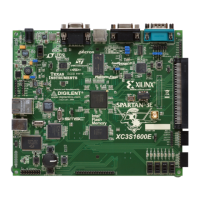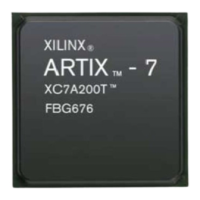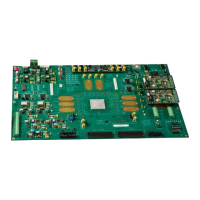Virtex-5 FPGA User Guide www.xilinx.com 43
UG190 (v5.0) June 19, 2009
Regional Clocking Resources
the global clock tree. Each BUFR can drive the four regional clock nets in the region it is
located, and the four clock nets in the adjacent clock regions (up to three clock regions).
Unlike BUFIOs, BUFRs can drive the I/O logic and logic resources (CLB, block RAM, etc.)
in the existing and adjacent clock regions. BUFRs can be driven by clock capable pins or
local interconnect. In addition, BUFR is capable of generating divided clock outputs with
respect to the clock input. The divide values are an integer between one and eight. BUFRs
are ideal for source-synchronous applications requiring clock domain crossing or serial-to-
parallel conversion. There are two BUFRs in a typical clock region (four regional clock
networks). The center column does not have BUFRs.
BUFR Primitive
BUFR is a clock-in/clock-out buffer with the capability to divide the input clock frequency.
Additional Notes on the CE Pin
When CE is asserted/deasserted, the output clock signal turns on/off. When global
set/reset (GSR) signal is High, BUFR does not toggle, even if CE is held High. The BUFR
output toggles after the GSR signal is deasserted when a clock is on the BUFR input port.
X-Ref Target - Figure 1-20
Figure 1-20: BUFR Primitive
Table 1-7: BUFR Port List and Definitions
Port Name Type Width Definition
O Output 1 Clock output port
CE Input 1 Clock enable port. Cannot be used in
BYPASS mode.
CLR Input 1 Asynchronous clear for the divide
logic, and sets the output Low. Cannot
be used in BYPASS mode.
I Input 1 Clock input port
CLR
CE
IO
ug190_1_20_032306

